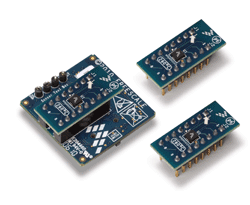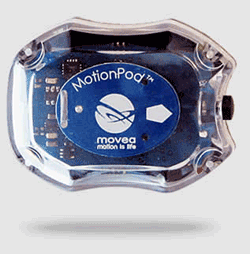Smaller, lower-cost ICs advance medical robotics
BY GINA ROOS
The medical robotics market should thank semiconductor makers for advances in IC geometry and higher levels of integration, which have led to lower costs over time, thus making new surgical robots and rehab solutions more feasible and cheaper. Smaller geometries also are creating faster and lower power devices.
One of the key obstacles at the beginning for any kind of robot design was the cost of product, said Mark DiPerri, senior field applications engineer at Freescale Semiconductor in Woburn, MA. Manufacturers couldn't go to market with many of them because they cost too much to make, he said.
The need for higher levels of integration was another issue. “It's getting better all the time. With multicore devices we're able to combine functions on a single die and get higher throughput. This means decisions can be made much faster especially in the medical industry where you don't have time to wait,” DiPerri said.
Today semiconductor vendors can provide very cost-effective solutions with much better accuracy than was ever imagined 10 or 15 years ago, DiPerri said.
This includes sensor technologies, which are playing a big role in advancing medical robotic designs. These designs will require all kinds of sensors, including accelerometers, magnetometers, and pressure sensors. All of these devices will play together to determine the location of the robot, whether it's a moving robot or a surgical robot, DiPerri said.
Multicore processing
Processors are also required as part of the robotics sensing system. DiPerri said the introduction of multicore devices is likely to advance these designs by delivering much higher speeds — a big requirement for robotic applications — compared to using multiple individual processors.
The beauty of multicore processors is that they don't have to be designed specifically for medical robotics applications, said DiPerri. There are certain benchmarks that a processor has to do in order to compute a specific function whether it's mathematical or a table look-up, but it really is about latency and throughout, he said.
Distributed processing
DiPerri also sees a move toward distributed processing in the medical field thanks to new intelligent sensors with built-in processing functions. One example is Freescale's MMA845xQ family. Though it's touted for many consumer applications, it also can find homes in medical applications.
“We are not building products based on robots. We're living in a converged world. There is a lot of overlay and a lot of reuse between different applications,” DiPerri said.
With many built-in power-saving features, the MMA845xQ family with onboard processing allows the user to shut the processor off and just keep the sensor “alive” in order to help keep power draw low. Each of the sensing elements can be self-sustaining until an event happens then it wakes up the processor.
As an added benefit for designers, Freescale offers a Sensor Toolbox (www.freescale.com/sensortoolbox) bundled kit that consists of development boards for each of the three accelerometers: MMA8451Q, MMA8452Q and MMA8453Q. The toolbox will provide medical robotics designers with a “vision” into how the sensor will work in their system but individual applications will require additional integration work to become part of a final product, said DiPerri.
MMA854xQ family members are intelligent accelerometers, so users will have to tailor that intelligence to meet their requirements but it's not difficult to do, he added.

Freescale's Sensor Toolbox kits provide development boards for each of the three MMA845xQ accelerometers.
DiPerri said the three most important factors to keep in mind are accuracy, how well the sensors are designed, and how good the software is. “Never forget the software. It's the gasoline in the engine.”
Design complexity
For rehabilitation robotics development, design complexity is the key challenge.
While no single design feature is too difficult, the complexity of the design, including electronics, mechanical design, control strategies and clinical know-how, all make it very challenging, said Stefan Bircher, executive vice president, Hocoma, a robotic rehab product manufacturer in Rockland, MA.
“Ten years ago rehabilitations robotic devices were fairly simple in terms of control strategies,” said Bircher. As an example Hocoma's Lokomat system, which moved patient legs over a treadmill with a so-called position-controlled strategy, did not allow for patient interactions, he added.
“Nowadays we use cooperative control strategies, which are adapting the guiding force of the device to the ability of the patient. The idea is that the robot assists only as much as needed. Besides the virtual-reality (VR) feedback, this is the most promising development to increase patient co-operation and therefore functional benefit,” Bircher said.
Bircher also noted that the key technology trend in rehabilitation robotics is the use of VR to provide functional feedback and to motivate the patients.
New sensor innovations
Sensors also are important, but the analysis of the signals is very complex. “Each patient has different anatomy and each specific pathology (such as stroke, spinal cord injury, traumatic brain injury) making a meaningful interpretation of the signals very difficult,” Bircher said.
As a result, new sensor innovations are playing a bigger role in body movement control and measurement systems.
As an example, Movea's MotionPod system, which initially targeted healthcare and rehabilitation researchers and OEMs, help them add motion-sensing capabilities to their products.

Movea's MotionPod motion-sensing system delivers accurate human body orientation measurement using a three-axis accelerometer, three-axis magnetometer, and three-axis gyroscope in a small form factor the size of a wristwatch.
Providing dynamic motion sensing information, the MotionPod allows developers to measure movement and perform physical activity assessments for things such as joint function measurement and diagnosis, functional physical therapy and biofeedback.
Aimed first at rehab applications, the MotionPod solution includes a three-axis accelerometer, three-axis magnetometer, and three-axis gyroscope, along with data software, in a form factor the size of a wristwatch.
“You can easily buy MEMS sensors from big silicon vendors, but if you're not expert at the art of using different types of sensors and providing the software then you will struggle with adding MEMS sensors to your application,” said Bruno Flament, Movea's chief technology officer, in Grenoble, France.
In addition to the motion IC, motion sensors, and microcontroller, the complete solution provides a wireless link to a node that is gathering all the information from the MotionPod, said Flament. “We also provide each customer in the rehab field with software so they can control and connect a network of MotionPods.”
One of Movea's customers, RM Ingénierie (RMI), is using the MotionPod in its BioVal solution, a high-tech module that allows physical therapists and doctors to quantify joint function, as well as monitor physical therapy activity with biofeedback game exercises.
In addition to physical therapy, biofeedback, and rehab applications, the MotionPod can be used in sports exercise, elderly monitoring, and medical robotics applications. ■
Advertisement
Learn more about Electronic Products Magazine





